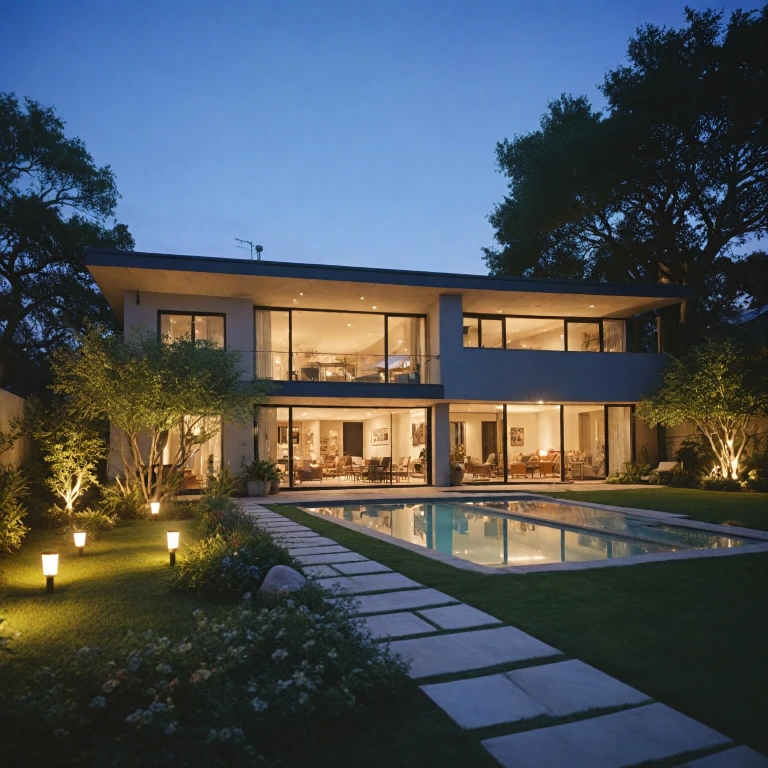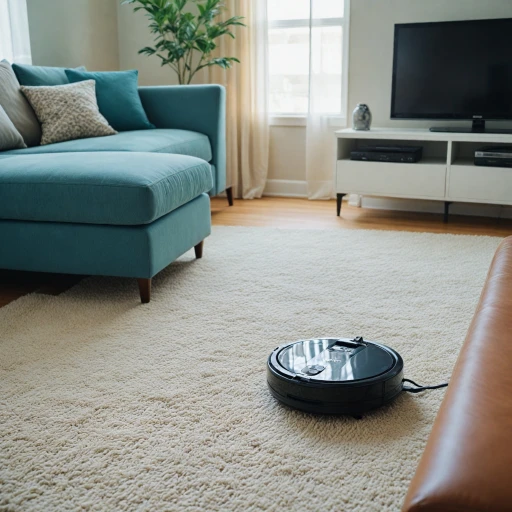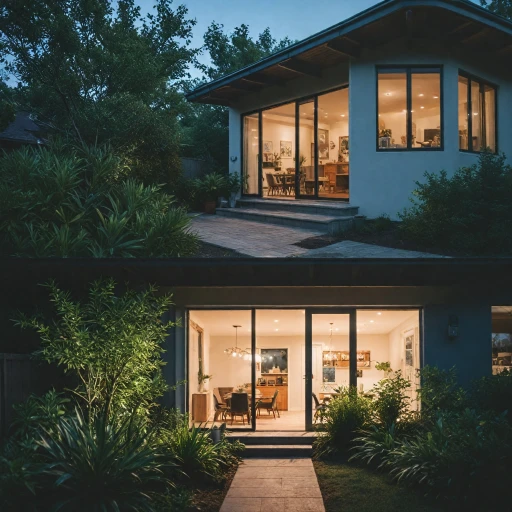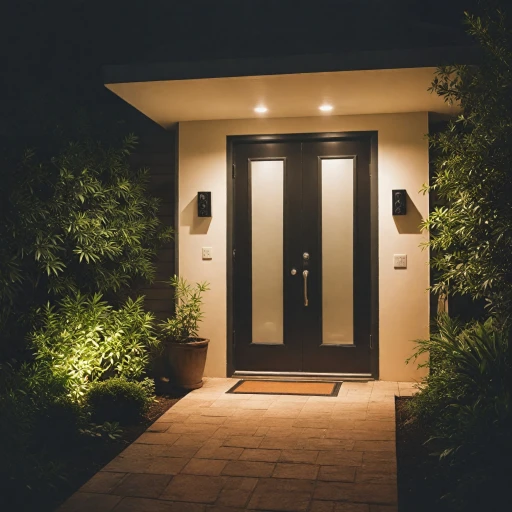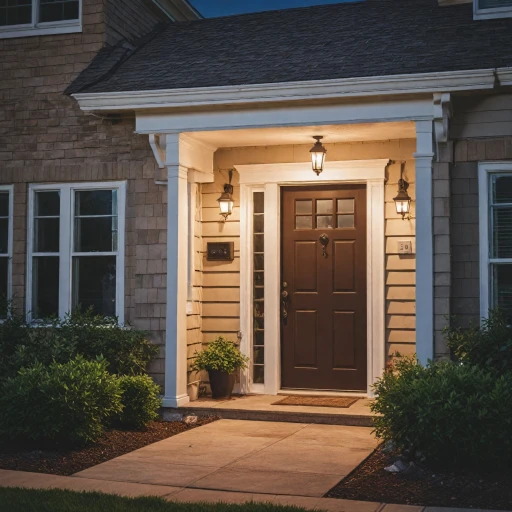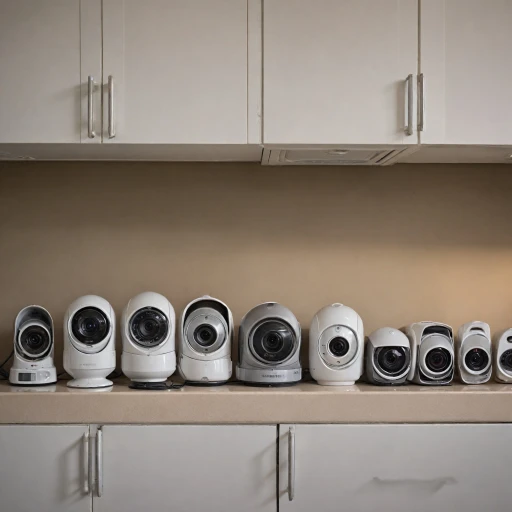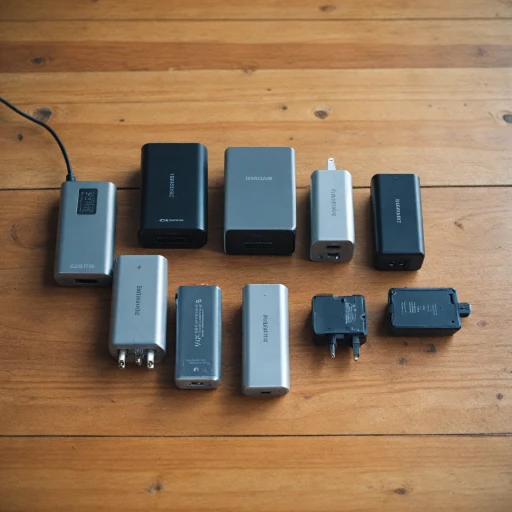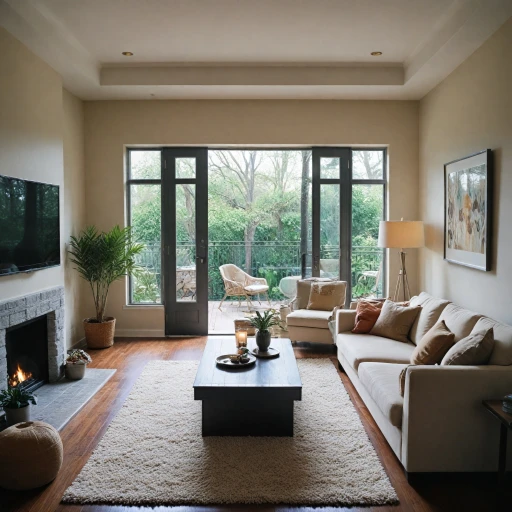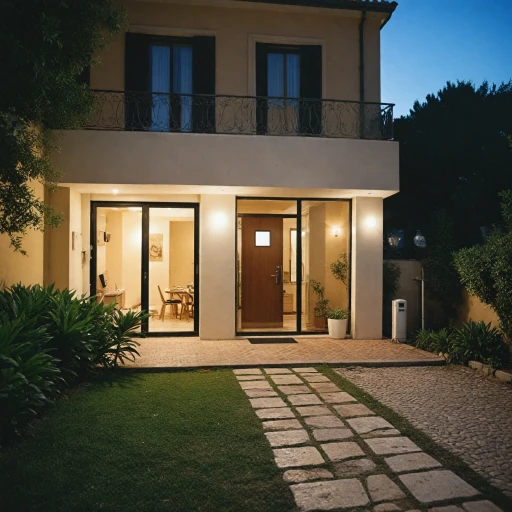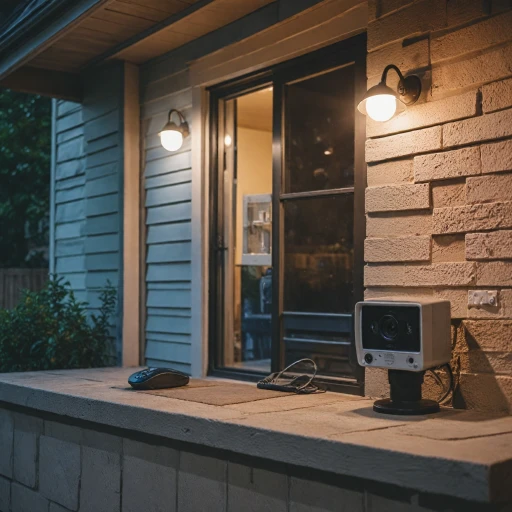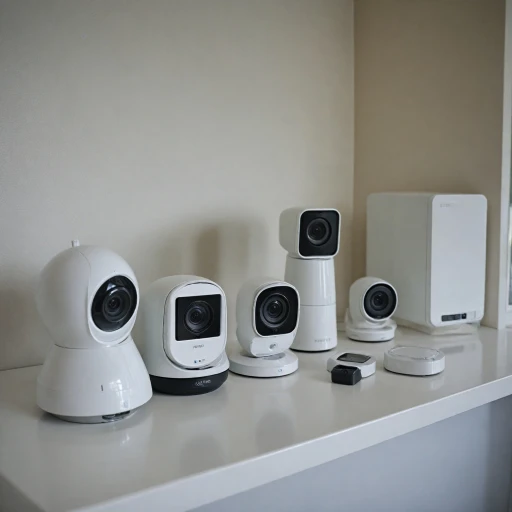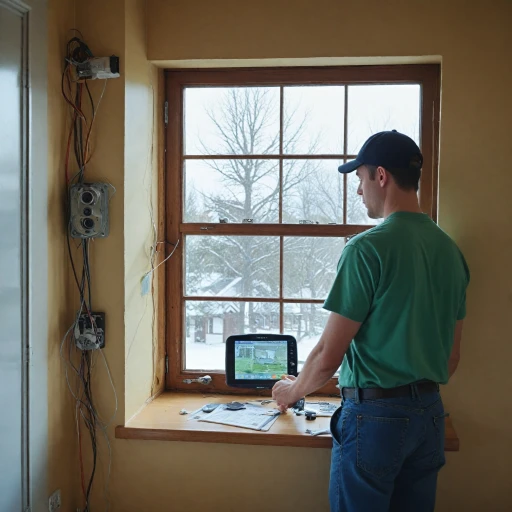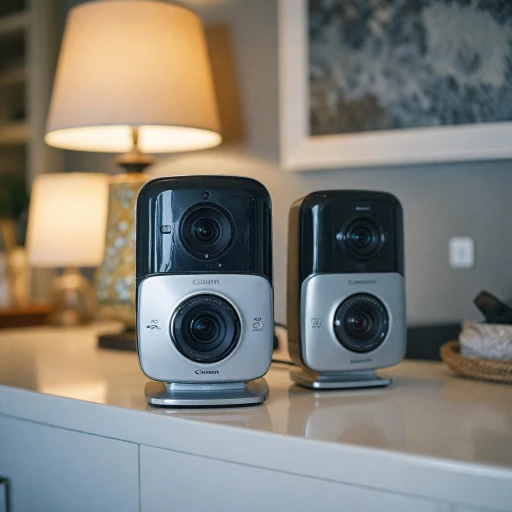
Understanding Long-Range Wireless Cameras
Diving Into Long-Range Wireless Security Cameras
When it comes to safeguarding your home, long-range wireless cameras are becoming increasingly popular. They offer a unique blend of flexibility and advanced features that traditional cameras lack. You might wonder what sets them apart and why they're considered the cream of the crop in home security solutions. For starters, these cameras excel in range. They can capture clear video footage over extended distances, making them ideal for expansive properties. Whether you desire an overview of your front yard or want to monitor an outdoor area located farther away, this capability is a major advantage. Moreover, the wireless aspect eliminates the hassle of complicated wiring. This not only makes for a simpler installation process but also enhances the aesthetic appeal of your property. Gone are the days of dealing with tangled cables and limited placement options. This aspect alone makes them a worthy consideration for homeowners seeking modern solutions. Security with these cameras isn't just about distance, though. Many offer smart features such as motion detection and custom view settings, ensuring that you are promptly alerted to any suspicious activity in your absence. With add-ons like night vision, even low light conditions won’t hinder your surveillance capabilities. Consider models equipped with color night vision for clearer nightly images. In terms of storage, many long-range cameras offer cloud services or on-device storage, giving you peace of mind knowing your recorded videos are safely backed up. Some models, like the renowned Arlo Pro or Nest Cam, even include battery powered options, offering further flexibility and ease of use. To decide if a long-range wireless camera fits your needs, one factor to keep in mind is the transition from BNC to RCA connectors in today's systems. Understanding these advancements will empower you to make informed decisions for your home security setup.Key Features to Look For
Essential Features for Effective Protection
When exploring the benefits of long-range wireless cameras for home security, it's crucial to identify the key features that can significantly enhance the system's effectiveness. Considering these features can help ensure that your security cameras deliver optimal performance and protection.- Range and Zoom Capabilities: A long range security camera should provide extensive coverage of your property. Look for a camera system that offers a broad field of view and capabilities such as optical zoom. This will allow you to accurately monitor distant areas without any loss of detail.
- Night Vision Enhancements: High-quality night vision is vital for round-the-clock surveillance. Consider cameras equipped with color night vision, allowing for vivid video capture even in low-light conditions. The ability to detect motion at night can further enhance security.
- Motion Detection Technology: Features like smart motion detection can notify you instantly when unexpected activity is detected. This is especially helpful for outdoor security systems, as it can alert you to potential threats before they become incidents.
- Weather Resistance and Durability: Outdoor cameras should be built to withstand various weather conditions. Opt for models with robust weatherproof ratings to ensure longevity and consistent performance, regardless of environmental challenges.
- Wireless and Battery Power Options: The flexibility of wireless security systems can be enhanced by choosing models that are battery powered or offer wire free installation. This makes placement more convenient and avoids the hassle of complex wiring.
- Storage Options: Consider security systems that offer flexible storage solutions, such as cloud storage, which can provide easy access and backup of footage. This is important for reviewing important video if a security event occurs.
- Integration with Other Smart Home Devices: Modern security cameras often integrate with existing smart home systems, enhancing overall security strategy. Models like the Nest Cam or Arlo Pro can offer tech-savvy solutions that are easily compatible with your home network.
Installation Tips and Best Practices
Ensuring an Effective Setup
Achieving the ideal installation setup for long-range wireless cameras involves considering a variety of factors that affect the camera's performance, security, and range. As these devices play a crucial role in keeping your home secure, implementing best practices is essential.
Strategic Camera Placement
When installing outdoor security cameras, ensure they cover vital areas such as entrances, garages, and expansive fields of view typical of backyards or driveways. Positioning is crucial, so consider areas that potential intruders would likely avoid floods of light from floodlight cameras or those that capitalize on the extensive range of motion detection.
Maximizing Signal Range
The strength and clarity of a wireless signal can significantly affect your system’s performance. To prevent dropout or lag during video streaming or when motion alerts are triggered, position your wireless security cameras near a reliable Wi-Fi router. Minimizing obstacles like walls and large metal objects can also help optimize the connectivity and extend the range of long-range wireless cameras.
Consider Weather and Power
Outdoor cameras, like battery-powered options or those with solar backup, are well-suited to varied weather conditions. It's best to choose models designed for durability and weather resistance. Coworking with a robust security system, you may want to consider models that offer weatherproof capabilities and robust battery life, ensuring continuous monitoring without frequent power interruptions.
Optimize Features for Security
Modern security cameras offer features such as pan tilt, zoom, and color night vision, which greatly enhance the detailed capture of activities within their view. Integrating these features in your setup will allow for clearer, more actionable images, especially when combined with smart technologies that store video footage efficiently. Before making a purchase, assess not just the sale price but also the holistic fit of these features with your specific needs.
For further insights on home security advancements, have a look at our comprehensive guide on enhancing home security with 4K surveillance cameras.
Overcoming Common Challenges
Conquering Installation Roadblocks
When setting up long-range wireless security cameras, installation can present several challenges. But, with some awareness of common hurdles, these issues can be minimized effectively. Firstly, the location and placement of your camera play a crucial role. If you are installing an outdoor security camera, ensure it covers the intended range security while avoiding obstructions. Cameras with a wide field view, such as a pan tilt or a floodlight camera, provide extensive coverage, reducing blind spots. The integration of motion detection capabilities in your wireless security camera can be equally tricky. Adjust the sensitivity settings based on the specific environment to reduce false alerts triggered by animals or swaying branches. High-performance systems like the Arlo Pro offer advanced detection settings that can differentiate between significant movement and minor ones. Battery life and power supply are critical, especially for wire-free and battery-powered options. It's essential to check the battery status regularly and decide whether a solar panel might assist in extending the battery life, especially for cams in outdoor settings exposed to sunlight. When considering the video quality, long-range wireless cameras often come with options for zoom and night vision. Configuring these features correctly ensures you're not missing out on any crucial details. For successful color night and improved visibility, make sure the camera settings are adjusted to take advantage of its night vision capabilities. In instances where the nest cam or other models experience connectivity issues, consider enhancing your Wi-Fi range. You might need a range extender or a more robust router to maintain a consistent connection. Investigating the potential for interference from nearby devices can also help. Lastly, before diving into an installation, ensure you comprehensively review any accompanying documentation to tap into the best practices recommended for your specific security system. For those reluctant to install the cameras themselves, many vendors offer professional setup services, which can save time and ensure optimal performance. Addressing these challenges with strategic solutions can significantly enhance the effectiveness and reliability of your home security setup, bringing peace of mind without the headache of frequent troubleshooting.Comparing Wired vs. Wireless Systems
Evaluating the Pros and Cons of Wired vs. Wireless Security Systems
Choosing the right home security system can be a daunting task, especially when deciding between wired and wireless options. Each has its own set of advantages and disadvantages, so it's essential to assess your specific needs and preferences before making a decision. Benefits of Wireless Security Cameras Wireless security cameras, such as the long-range wireless cameras and the versatile Arlo Pro, offer flexibility and ease of installation. Here are some of their standout benefits:- Ease of Installation: Wireless cameras eliminate the need for extensive wiring, making them easier to set up, particularly in older homes where running cables can be challenging.
- Flexibility in Placement: With no cords to tether them, wireless systems can be installed in a wide range of locations, like hard-to-reach outdoor areas, maximizing their field view and coverage.
- Remote Access and Control: Most wireless setups are compatible with smart devices, allowing you to monitor your home remotely. This convenience is enhanced by features like motion detection and night vision.
- Signal Range Issues: Wireless security cameras, particularly long-range outdoor models, may face interference from physical obstructions or other electronic devices, affecting their performance.
- Battery Dependency: Many wireless cameras are battery-powered, meaning you’ll need to monitor and charge them regularly to ensure continuous operation.
- Potential for Hacking: Being connected to Wi-Fi networks, they might be susceptible to cyber threats if security measures aren't diligently maintained.
- Stable and Reliable Connection: Unlike wireless models, wired security cameras offer a consistent connection, free from radio frequency interference.
- Higher Quality Video: Generally, wired systems deliver better video quality and higher resolutions, beneficial for detailed monitoring.
- No Battery Concerns: With wired setups, there is no need to worry about battery life or regular recharging.
- Complicated Installation: Setting up a wired system can be more labor-intensive and may require professional help, especially if it involves running cables through walls.
- Lack of Flexibility: Once installed, relocating cameras can be tedious and potentially costly.

